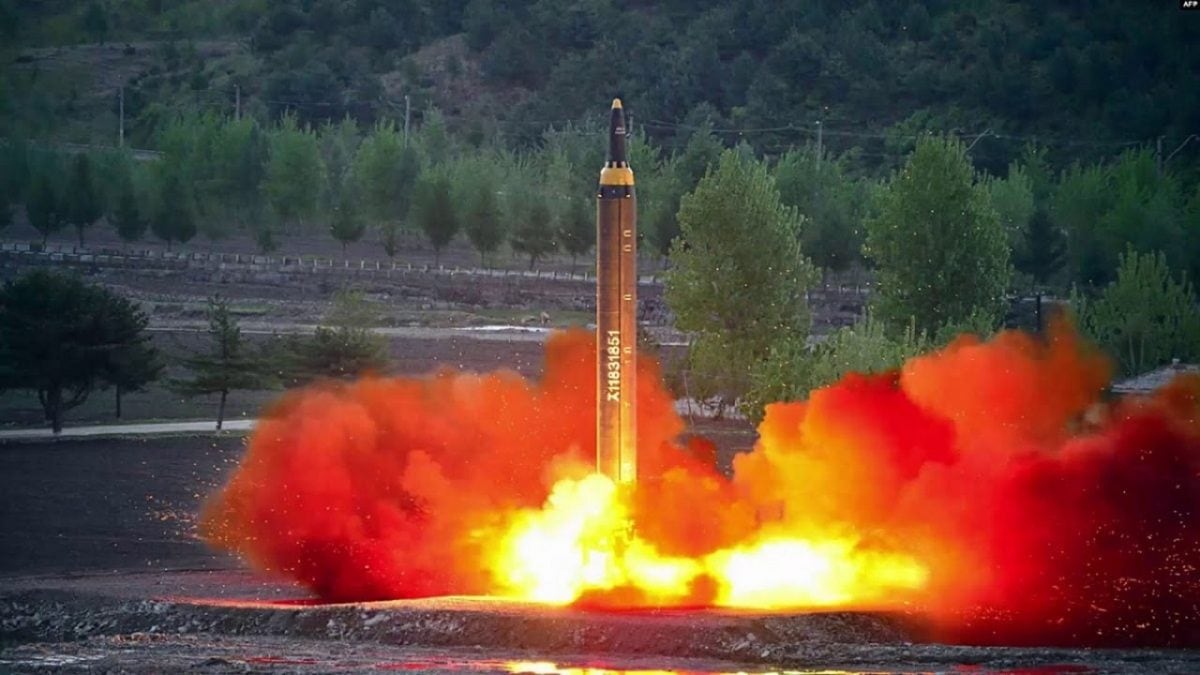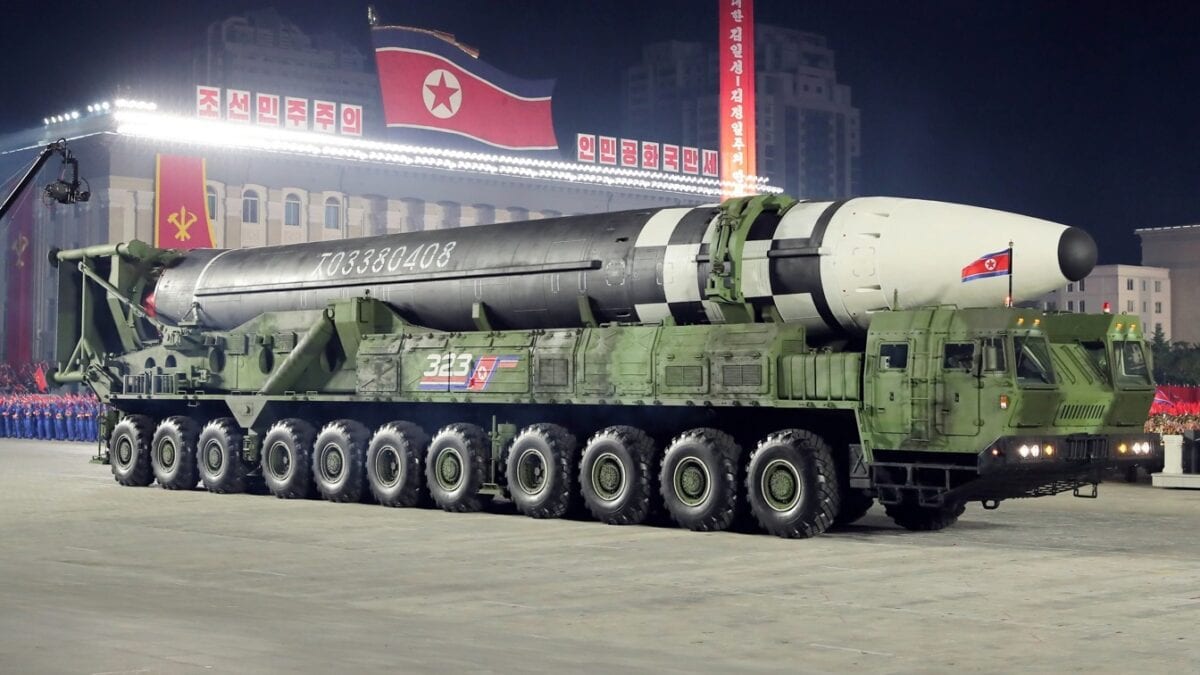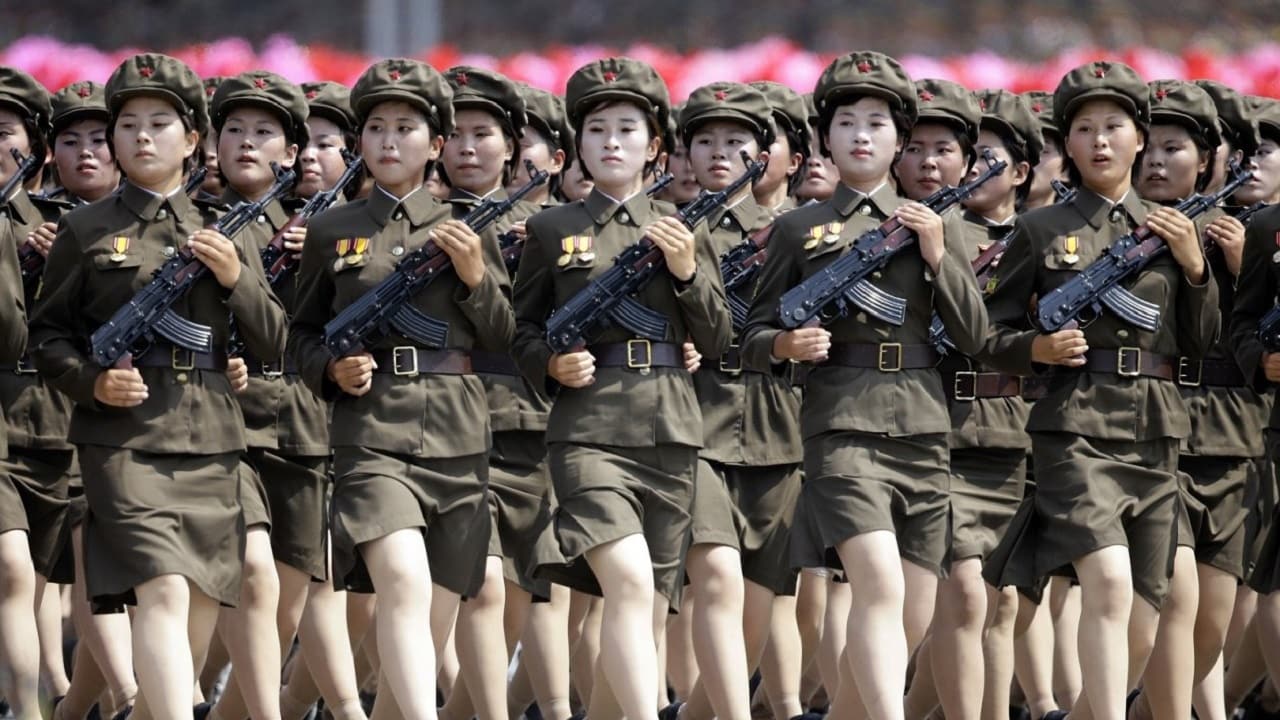Senior Chinese and Russian delegates joined North Korean leader Kim Jong Un this week to celebrate Pyongyang’s annual military parade. Victory Day is when the Hermit Kingdom commemorates the end of hostilities in the Korean War, and North Korea tends to celebrate with a full display of the country’s latest weapons.
This year, the parade unsurprisingly featured North Korea’s Hwasong-17 and Hwasong-18 intercontinental ballistic missiles. Pyongyang launched the Hwasong-18 earlier this month as part of a series of provocations.
Pyongyang’s New Underwater Drone
In addition to parading its advanced ICBMs, Pyongyang debuted a new underwater drone that analysts believe functions similar to a nuclear-armed torpedo. The drone’s development indicates that the country is looking for new ways to deliver nuclear weapons. Indeed, industry experts largely agree the drone is designed to carry nuclear warheads.
Back in April, Pyongyang claimed to have tested an underwater drone capable of carrying a nuke. Designated as the Haeil-2 unmanned underwater nuclear attack boat, the weapon’s test warhead was detonated roughly three days after the drone ventured off North Korea’s coast. The drone’s predecessor, the Haeil-1, was reportedly tested one month prior, and the boast is that it is capable of creating a “radioactive tsunami.” U.S. officials believe that since 2021, North Korea has conducted more than 50 test launches involving its underwater drone. In 2022, state media also claimed that the Haeil drones achieved full operational capabilities.
What We Know About the Haeil Drones
Experts with The Drive have compared the Haeil to Russia’s Poseidon torpedo. Also known as Status-6 in Russia, this autonomous, nuclear-powered underwater vehicle can deliver nuclear and conventional weapons.
Similar to the Poseidon, the North Korean drone features a pump-jet propulsor at the rear. However, as detailed by The Drive, the Haeil likely relies on battery propulsion, while the Poseidon features nuclear propulsion:
“There is no evidence, at this point, that North Korea is working on the kinds of nuclear technologies that would provide a small enough reactor to power such a vehicle. Regardless, the ranges involved with North Korea deploying such a weapon against the South, or even Japan, and even if it were to loiter for some period before attacking, are vastly less than what Poseidon was built to overcome.”
While the Haeil drones are not nearly as capable as Russia’s Poseidon, they threaten North Korea’s adversaries, including South Korea and the United States, because they give Pyongyang the ability to send assets to strategically important locations without being detected.
North Korea’s Expanding Weapons Development
The debut of the underwater drone at this year’s Victory Day parade comes as Pyongyang accelerates the pace of its threats, provocations, and weapons development. Despite the country’s pledge in 2018 to work toward “complete denuclearization of the Korean Peninsula,” Pyongyang has carried out more than 100 missile tests over the last year. In addition to ballistic missiles capable of reaching Seoul and Tokyo, Pyongyang is continuously developing longer-range rockets designed to strike the United States.
North Korea’s most recent Hwasong-18 launch became the country’s longest-ever missile test. The solid-fueled ICBM reportedly flew for more than 70 minutes and landed in the sea east of the Korean peninsula, according to Japan. The UN Security Council has issued many resolutions banning all ballistic missile and nuclear tests by Pyongyang. The Kim regime defies these with regularity.

- Hwasong-12 IRBM. Image Credit: North Korea State Media.

- Hwasong-12. Image Credit: KCNA/North Korean State Media.

- North Korean Hwasong-16 ICBM. Image Credit: KCNA/North Korean State Media.
Overall, industry officials predict that North Korea has assembled between 40 and 50 nuclear weapons. However, a 2021 study by RAND and the Asan Institute placed the total number much higher, at 116. The country has also conducted six atomic tests over the years. As detailed by The New York Times, “In 2017, the most recent test, the estimated yield of 120 to 250 kilotons dwarfed the 15 to 20 kiloton US bombs that destroyed Hiroshima and Nagasaki in 1945. North Korea probably has developed miniaturized nuclear devices to fit into its ballistic missile warheads.”
What About an EMP Attack?
While North Korea’s build-up of ballistic missiles is concerning on its own, the country’s ability to carry out an electro-magnetic pulse (EMP) attack is also growing. Since grid infrastructure in the U.S. is weak, aging, and lacking resilience, it has become increasingly vulnerable to such an attack.
As defined by the Cybersecurity and Infrastructure Security Agency, EMPs are associated with targeted attacks using high-altitude nuclear detonations or conventional munitions. EMP attacks would be extremely deadly if carried out, since they could permanently disable large sections of the national electric grid, resulting in countrywide blackouts. Military officials have warned in the past about the devastation an EMP attack could cause, but not much has been done to better protect national grids. Since Pyongyang could launch an EMP attack using an ICBM, the country’s continued work in this area is a grave concern.
Maya Carlin, a Senior Editor for 19FortyFive, is an analyst with the Center for Security Policy and a former Anna Sobol Levy Fellow at IDC Herzliya in Israel. She has by-lines in many publications, including The National Interest, Jerusalem Post, and Times of Israel. You can follow her on Twitter: @MayaCarlin.
From 19FortyFive

